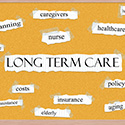
 I’m sure you’ve all heard the scary statistic on the number of people who don’t even have a simple will in place, but every time that fact enters my eardrums and hits my brain, I literally squirm in my chair. The AARP reports that 41 percent of baby boomers and 71 percent of millenials don’t have wills. A simple estate plan that includes wills, durable power of attorney forms, and letters of instructions will typically cost less than $1,000 from a qualified attorney. I get that it’s “just one of those things” that gets swept aside each year but, to be blunt, it’s simply foolish to not have these documents in place. By not having these important forms drafted and on file, you are potentially creating an absolute nightmare situation for your family that includes extensive time, energy, stress and cost that could easily be avoided.
I’m sure you’ve all heard the scary statistic on the number of people who don’t even have a simple will in place, but every time that fact enters my eardrums and hits my brain, I literally squirm in my chair. The AARP reports that 41 percent of baby boomers and 71 percent of millenials don’t have wills. A simple estate plan that includes wills, durable power of attorney forms, and letters of instructions will typically cost less than $1,000 from a qualified attorney. I get that it’s “just one of those things” that gets swept aside each year but, to be blunt, it’s simply foolish to not have these documents in place. By not having these important forms drafted and on file, you are potentially creating an absolute nightmare situation for your family that includes extensive time, energy, stress and cost that could easily be avoided.
Do I need a Trust?
I recently attended the Raymond James Trust School, an all-day educational seminar dedicated to the exciting world of estate planning! While it may not be my personal favorite area of financial planning, it is crucial and essential to maintaining a well-rounded, solid financial plan. Trusts may or may not be necessary in your personal estate plan, but a trust is a great tool to give you more control over assets and to avoid probate. Clients are often confused as to what a trust actually is or what it truly accomplishes. For more information, here’s a link to a brief whitepaper on some reasons why a trust may be appropriate for you.
When to review Beneficiaries
Another area that clients often forget about is keeping up with the beneficiaries on their accounts or life insurance policies. We’ve had clients discover that ex-spouses are still listed on insurance policies and deceased family members are listed as primary beneficiaries on million dollar retirement accounts. It is something we proactively check to make sure the correct individuals are selected when we initially set-up an account. However, there is a responsibility that falls on the client to keep us informed of life-changing events that would warrant a beneficiary change. This is why we work together as a team with our clients to do everything we can to avoid such monumental mistakes.
Designating Charities
One final thought that I found especially interesting were the numbers surrounding charitable giving. Over $325 BILLION was given to charity last year – 72% of those funds were given by individuals. This fact made me smile. Although times are still tough for many, Americans are among the most generous in giving to those in need. Charitable planning and giving is something very important to many clients and is something we help clients with often. Please don’t hesitate to bring this topic up with us if you ever have questions or want to talk more about efficient ways to give your favorite charities.
Nick Defenthaler, CFP® is a Associate Financial Planner at Center for Financial Planning, Inc. Nick currently assists Center planners and clients, and is a contributor to Money Centered and Center Connections.
The information has been obtained from sources considered to be reliable, but we do not guarantee that the foregoing material is accurate or complete. Any information is not a complete summary or statement of all available data necessary for making an investment decision and does not constitute a recommendation. Any opinions are those of Center for Financial Planning, Inc. and not necessarily those of RJFS or Raymond James. You should discuss any legal matters with the appropriate professional. C14-013998

















